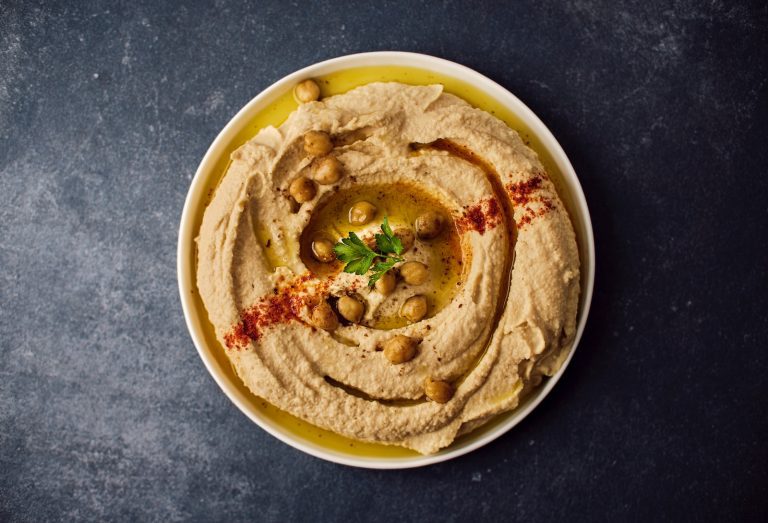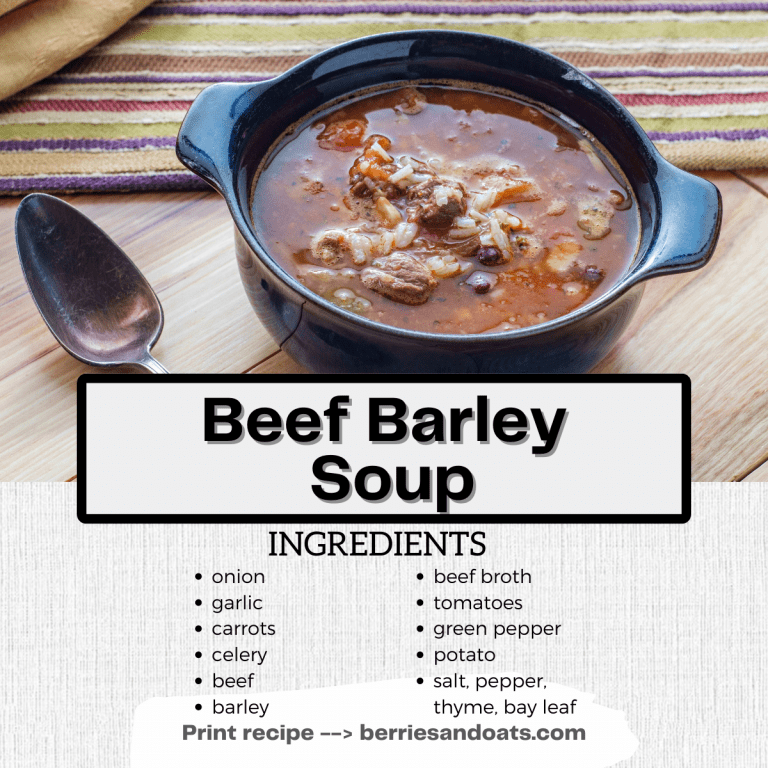Chronic, systemic inflammation is a serious health concern that can be made worse — or better — with diet. An anti-inflammatory diet or eating more foods with anti-inflammatory properties can play a role in the body’s response to chronic inflammation. Chronic inflammation plays a significant role in the development and progression of many noncommunicable diseases like cancer, cardiovascular disease, and neurocognitive decline.

Inflammation vs Chronic Inflammation
Inflammation is a crucial response to injury or assaults, aiding in tissue repair and maintaining balance in the body. Interestingly, inflammation can be acute, lasting for hours to days, or chronic when triggered persistently, leading to continuous tissue damage. Chronic inflammation is associated with conditions like atherosclerosis, cancer, and neurocognitive diseases.
Atherosclerosis, a chronic inflammation of arterial walls, contributes to cardiovascular diseases like heart attacks and strokes. Cancer, characterized by chronic inflammatory responses, can exploit immune system mechanisms for its progression. Moreover, chronic inflammation negatively affects neurocognitive function by disrupting the blood-brain barrier, potentially leading to neuroinflammatory diseases.

Systemic Inflammation
But there is another kind of inflammation ― the kind that affects the whole body ― which is called systemic. Systemic inflammation can become chronic; it can persist for months, or even years.
Chronic, systemic inflammation is a factor in diseases such as:
- Obesity
- Metabolic syndrome
- Prediabetes
- Type 2 diabetes
- Heart disease
- Inflammatory bowel disease, including Crohn’s disease and ulcerative colitis
- Some forms of cancer
- Arthritis
- Alzheimer’s disease
What is a Pro-Inflammatory diet?
On the flip side, pro-inflammatory diets rev up the inflammatory response. They’re heavy on processed meats, sugary treats, and fats like omega-6 fatty acids. Take the Western Diet, for example—it’s a prime example, with its love for fast food and snacks. These diets not only lack essential nutrients but also contain additives like emulsifiers and sweeteners, which can mess with gut health and ramp up inflammation.
Eating lots of refined grains and sugars, typical in pro-inflammatory diets, spikes glucose levels and leads to more insulin production. But here’s the catch: insulin is proinflammatory too, and chronically high levels can up the risk of metabolic syndrome. Plus, these diets often throw off the balance between sodium and potassium, which can spell trouble for blood pressure, kidney health, and more.
So, when it comes to fighting inflammation, what you eat matters—a lot. Making smart choices about what goes on your plate can make a big difference in your long-term health.
Background of the Anti-Inflammatory Diet
Making changes to what you eat is just one way to tackle systemic inflammation. Nowadays, “diet” often gets boiled down to just cutting calories or chasing after trendy superfoods for rapid weight loss. But here, we’re talking about something broader. When we say “diet,” we’re talking about lifestyle shifts that stick around for the long haul, aimed at managing overall health.
Anti-inflammatory diets aren’t some newfangled idea—they’ve been around for ages. But they’re gaining traction as a tool for fighting and preventing diseases. Take the Mediterranean diet, DASH diet, or traditional diets from places like Okinawa, the Nordic region, or Mexico. These diets have a lot in common: plenty of fruits and veggies, whole grains, and healthy fats like olive oil. They also stress lean proteins like fish and chicken over red meat, with just a sprinkle of dairy, alcohol, and processed foods. The aim? To keep inflammation at bay.
On the flip side, proinflammatory diets kick the inflammatory response into high gear. They’re heavy on processed meats, sugary treats, and fats like omega-6 fatty acids. Think of the Western Diet—it’s a prime example, with its love for fast food and snacks. These diets not only lack essential nutrients but also pack in additives like emulsifiers and sweeteners, which can throw gut health out of whack and ramp up inflammation.
Feasting on refined grains and sugars, common in proinflammatory diets, jacks up glucose levels and triggers more insulin production. But here’s the kicker: insulin is proinflammatory too, and having too much of it can up the risk of metabolic syndrome. Plus, these diets often mess with the balance between sodium and potassium, which can spell trouble for blood pressure, kidney health, and more.

But it’s not all black and white. Some diets have a mix of both pro- and anti-inflammatory elements. You can figure out where a diet falls on the spectrum by using something called the Empirical Dietary Inflammatory Index (EDII). It sums up the inflammatory potential of a diet based on groups of foods people commonly eat. This index can help assess how a person’s current diet might be affecting inflammation levels and guide dietary changes over time.
Anti-inflammatory diets are big on fruits and veggies for a reason. They’re packed with compounds that help fend off cancer, like selenium in Brazil nuts and antioxidants in berries. Whole grains, nuts, and legumes also play a role, helping keep blood sugar in check and slashing the risk of tumors.
When it comes to heart health, anti-inflammatory diets shine too. They’re loaded with good fats, like those found in nuts and fish, which help slash cholesterol levels. Plus, they’re rich in polyphenols, found in treats like blueberries and dark chocolate, which help tamp down inflammation and keep the heart ticking happily.
And let’s not forget about the brain. As we age, the risk of neurodegenerative diseases like Alzheimer’s and Parkinson’s creeps up. But sticking to an anti-inflammatory diet, packed with brain-boosting goodies like omega-3s and antioxidants, can help stave off cognitive decline and keep those gray cells firing on all cylinders.
The bottom line? What you eat matters—a lot. Choosing the right foods can be a powerful tool in the fight against inflammation and disease.
What is an Anti-Inflammatory diet?
When it comes to reducing systemic inflammation, dietary modifications are key. Often, people think of “diet” as just cutting calories or hopping on the latest fad for quick weight loss. But here, we’re talking about a broader concept. “Diet” means making sustainable lifestyle changes for overall health.
Anti-inflammatory diets aren’t a new invention; they’ve been around for ages. But they’re gaining traction as a tool for preventing and treating diseases. Think of the Mediterranean diet, DASH diet, or traditional diets from places like Okinawa, the Nordic region, or Mexico. These diets have similar foundations: lots of fruits and veggies, whole grains, and healthy fats like olive oil. They also emphasize lean proteins like fish and chicken over red meat, with limited intake of dairy, alcohol, and processed foods. The goal? To keep inflammation in check.
The Beginner’s Guide to Anti-Inflammatory Foods
Anti-inflammatory diets pack a punch when it comes to reducing the risk of chronic diseases. But adopting and sticking to these diets can be tough for folks, thanks to a host of barriers.
For starters, getting your hands on the healthy grub that makes up most anti-inflammatory diets can be a real challenge. When asked, people often say they pick foods based on cost, taste, and convenience. And for those on tight budgets, the price tag on nutrient-rich foods like fruits, veggies, and lean meats can be a major turnoff.
Low-income households, in particular, feel the squeeze when it comes to making healthier choices. They end up snagging cheaper, calorie-packed foods like processed meats and ready-to-eat meals because they’re easier on the wallet and often quicker to whip up. Plus, if you’ve got kiddos in the mix, you know they can be picky eaters—so calorie-dense treats tend to win out.
And let’s not forget about time. Families juggling long work hours and multiple jobs barely have a moment to breathe, let alone plan and cook nutritious meals. Add in limited access to grocery stores or fresh food, and it’s a recipe for frustration. Many lower-income communities are stuck in food deserts, where healthy options are scarce and getting to them is a hassle.
All these hurdles make it tough for folks to dive into a healthier diet. Healthcare providers need to keep these challenges in mind when dishing out advice and recommendations. After all, a one-size-fits-all approach just won’t cut it when it comes to healthy eating.
Avoid Foods that cause Inflammation
Try to avoid or limit these foods as much as possible:
- refined carbohydrates, such as white bread and pastries
- French fries and other fried foods
- soda and other sugar-sweetened beverages
- red meat (burgers, steaks) and processed meat (hot dogs, sausage)
- margarine, shortening, and lard
Add one or more of these anti-inflammatory foods to each meal
An anti-inflammatory diet should include these foods:
- tomatoes
- olive oil
- green leafy vegetables, such as spinach, kale, and collards
- nuts like almonds and walnuts
- fatty fish like salmon, mackerel, tuna, and sardines
- fruits such as strawberries, blueberries, cherries, and oranges
The Anti-Inflammatory Diet Action Plan
Anthocyanins, turmeric, omega-3 fatty acids, and resveratrol are just some of the nutrients and compounds that come up when talking about the anti-inflammatory diet. Does it sound complicated? Definitely! But, it doesn’t have to be so complex. At its core, the anti-inflammatory diet is a healthy Mediterranean-style diet with a focus on nutrient-dense foods and healthy fats, like salmon, avocado, nuts, and olive oil. The Anti-Inflammatory Action Plan is a great program for beginners who are just looking to clean up their meal planning regime by selecting a variety of fruits, vegetables, lean proteins, and healthy fats.
In this program, you will find,
- 3 Recipe Collection Ideas that you can make even on the busiest of days
- 2 weeks of Meal Plans
- 2 Resources
Access to this program is available exclusively to Berries and Oats Members. Not a member? No problem! Sign up now with unlimited clients for only $15.00 USD monthly. Once you are a member, the Anti-Inflammatory Action Plan can be accessed immediately.
Anti-Inflammatory Recipes
For some inspiration, try these anti-inflammatory dinner recipes:





